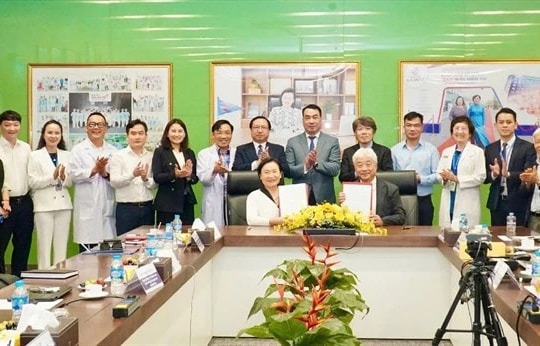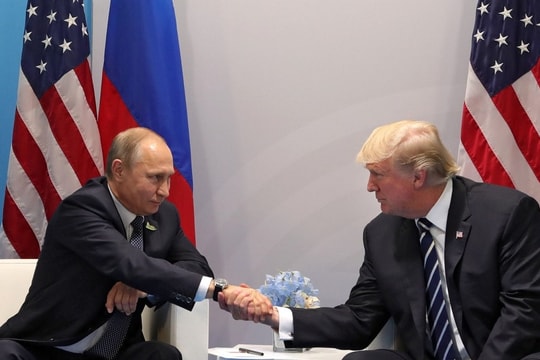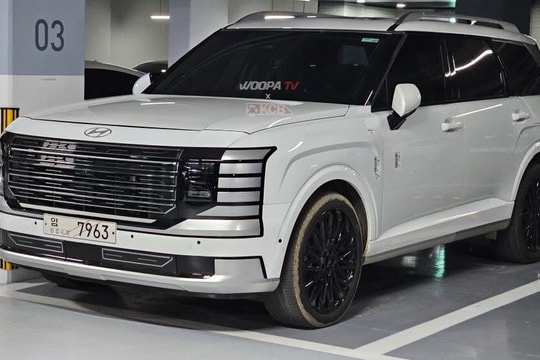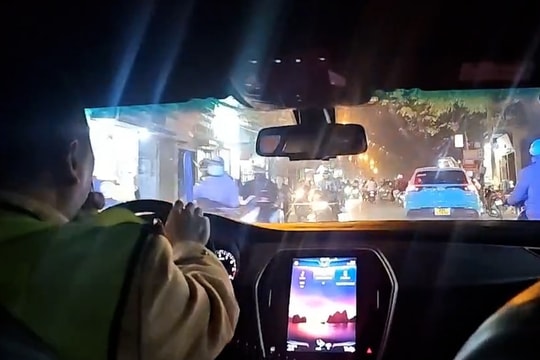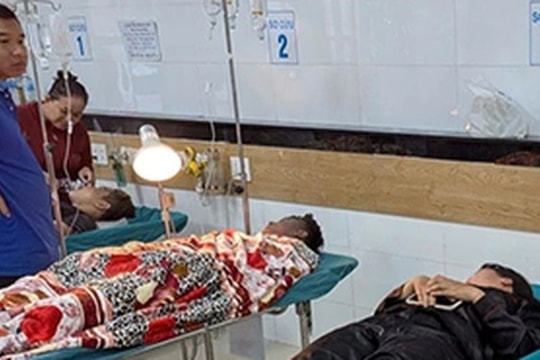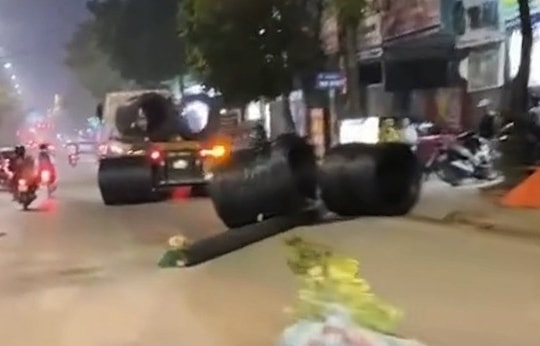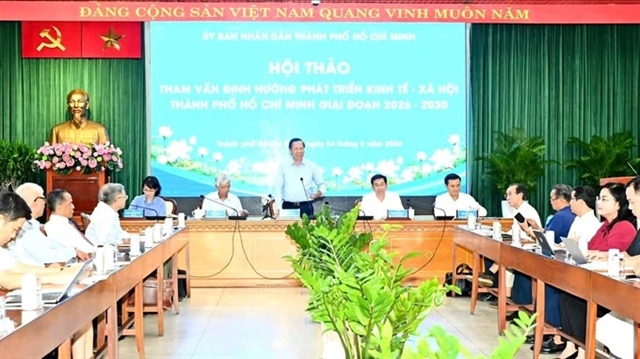 |
| A seminar held on August 24 to discuss the HCM City’s socio-economic development strategy for the 2026-30 period. — Photo www.sggp.org.vn |
HCM CITY — HCM City is seeking a breakthrough strategy to drive socio-economic growth in the next five years.
The municipal People's Committee last Saturday (August 24) held a seminar to discuss the 2026-30 socio-economic development strategy.
Speaking at the seminar, Chairman of HCM City People's Committee Phan Văn Mãi said Việt Nam has ten years left to break free from the middle-income trap.
“Therefore, the city should outline strategic socio-economic plans, tasks and solutions by 2030,” he said.
These efforts will not only fulfill the current term's objectives but also establish a foundation for the city's development by 2035, contributing to the country’s efforts to overcome the middle-income trap, he said.
He called on participants to provide input and propose solutions to achieve the term’s goals while addressing key strategic bottlenecks and laying the groundwork for future development.
Nguyễn Khắc Hoàng, director of the city’s Statistics Office, said increasing labour productivity is essential for escaping the middle-income trap.
However, in recent years, the city’s labour productivity has declined, falling below the national average and reaching a saturation point, he said.
“Without strong incentives, further productivity gains will be difficult to achieve,” he said.
He said restructuring export processing zones and industrial parks, attracting leading enterprises, and reassessing key industries were crucial.
Priority should be given to sectors with growth potential, such as commerce, logistics, cultural industries, financial centers, tourism, healthcare and education, he said.
Vũ Thành Tự Anh, Dean of the Fulbright School of Public Policy and Management (FSPPM) under Fulbright University Việt Nam, said HCM city must maintain an economic growth rate of 9-9.5 per cent to escape the middle-income trap.
“Achieving this level of growth requires making the industrial sector the top priority,” he said.
However, the city’s economic structure shows clear signs of declining industrial production, making it crucial for the city to refocus on industrial development.
Technology must be at the heart of this growth, especially disruptive technologies like AI and energy.
“AI will reshape cities within the next five to 10 years, so the city should develop a coherent AI strategy,” he said.
He also suggested the city adopt a corporate diplomacy strategy to attract major corporations and emphasise the role of private investment.
The city's current growth model has reached its limits and lacks further momentum. Therefore, the city must broaden its focus beyond economic growth to include environmental and social metrics, he said.
Addressing institutional bottlenecks is crucial. This means identifying key growth drivers, determining the necessary institutional changes, and removing barriers to ensure proactive and effective implementation, he added.
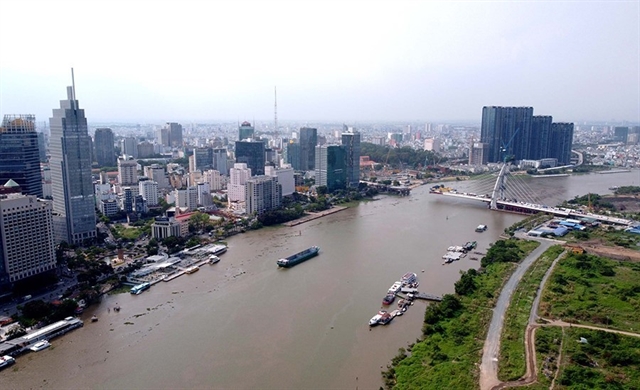 |
| HCM City’s central area along the Sài Gòn River. — VNA/VNS Photo Thanh Vũ |
Over the next five years, the city should capitalise on its political stability and the opportunities presented by the Fourth Industrial Revolution to attract investment and boost growth, Trần Du Lịch, an economic expert, said.
Priority should be given to urban beautification and development, including addressing all housing along and near canals and improving unsafe residential areas with inadequate living conditions, he said.
The city should put forward special mechanisms to accelerate urban infrastructure investment, with a focus on urban rail.
It should also refine its governance frameworks to transition towards a more effective and efficient urban administration model.
“To achieve the development vision for 2045, we must embrace new thinking and solve problems with different mechanisms and approaches,” he said.
Trần Hoàng Ngân, Assistant of the Secretary of the city’s Party Committee, said the key to the city’s future development lies in having a superior, transparent, and open institutional framework.
He called for the prompt enactment of a special urban Law.
The city should focus on infrastructure development, improving human resources, supporting business growth, and enhancing the leadership role of State-owned enterprises in the market, he said.
“If we establish a cohesive institutional and socio-economic infrastructure, coupled with high-quality human resources, excellent healthcare, stable political security, and safe social conditions, investment in the city will be highly attractive,” he said.
He recommended the city prioritise the disbursement of public investment funds and infrastructure investments to serve as a catalyst for socio-economic development by 2030.
Maintaining growth target
The municipal People's Committee chairman Phan Văn Mãi said the city will continue to seek and integrate expert feedback to create the most effective documents, and set ambitious goals to lead the way.
He urged departments, agencies, experts, and scientists to further research and refine socioeconomic goals, ensuring that each component represents a clear task supported by practical conditions for maximum feasibility.
He said the southern city is committed to maintaining an economic and social growth rate of approximately nine per cent for the 2025-30 period.
“This requires a series of tasks and initiatives, supported by a suitable institutional framework and policy mechanisms to attract investment and enhance investment absorption through substantial reforms in administrative systems and workforce development,” he said. — VNS




